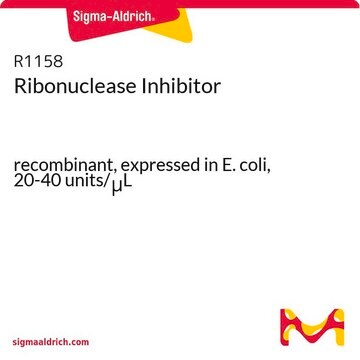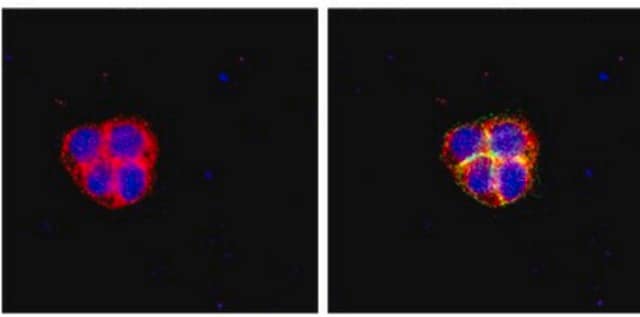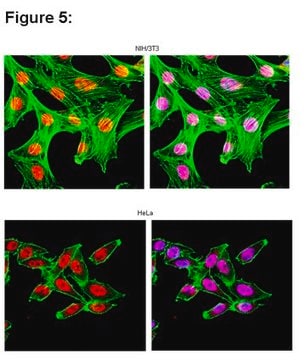RIP
Imprint® RNA Immunoprecipitation Kit
High-capacity Protein A magnetic beads for successful RNA Immunoprecipitation,suitable for use with mRNA and microRNA
Sinonimo/i:
Magnetic Bead RNA Immunoprecipitation, RNA Immunopreciptation, mRNA Immunopreciptation, microRNA Immunoprecipitation
About This Item
Prodotti consigliati
Categorie correlate
Descrizione generale
Learn more about this product and view application data.
Applicazioni
- Suitable for downstream applications
- Individual target characterization to genome-wide profiling techniques
- Characterization of signal transduction pathways
- Verification of ChIp-chIP and ChIP-seq data
Caratteristiche e vantaggi
- Xtra Protein A magnetic beads with higher binding capacity
- Step-by-step protocols for cell lysis and immunoprecipitation
- RNAse inhibitors and RNAse-free reagents to maintain RNA integrity
- Negative control and antibody included
Note legali
I componenti del kit sono disponibili anche separatamente
- I5381IgG from mouse serum, reagent grade, ≥95% (SDS-PAGE), lyophilized powderSDS
- I5006IgG from rabbit serum, reagent grade, ≥95% (SDS-PAGE), essentially salt-free, lyophilized powderSDS
- M7023Anti-Mouse IgG (whole molecule) antibody produced in rabbit, IgG fraction of antiserum, buffered aqueous solutionSDS
- P8340Protease Inhibitor Cocktail, for use with mammalian cell and tissue extracts, DMSO solutionSDS
- R1158Ribonuclease Inhibitor, recombinant, expressed in E. coli, 20-40 units/μLSDS
Raccomandato
Richiesto ma non fornito
Avvertenze
Warning
Indicazioni di pericolo
Consigli di prudenza
Classi di pericolo
Aquatic Chronic 3 - Eye Irrit. 2 - Flam. Liq. 3 - Skin Irrit. 2
Codice della classe di stoccaggio
3 - Flammable liquids
Classe di pericolosità dell'acqua (WGK)
WGK 3
Punto d’infiammabilità (°F)
100.4 °F
Punto d’infiammabilità (°C)
38 °C
Certificati d'analisi (COA)
Cerca il Certificati d'analisi (COA) digitando il numero di lotto/batch corrispondente. I numeri di lotto o di batch sono stampati sull'etichetta dei prodotti dopo la parola ‘Lotto’ o ‘Batch’.
Possiedi già questo prodotto?
I documenti relativi ai prodotti acquistati recentemente sono disponibili nell’Archivio dei documenti.
I clienti hanno visto anche
Articoli
Sigma’s Imprint RNA Immunoprecipitation Kit was used to copurify human argonaute 2 (Ago2)-associated RNAs from HeLa cells. MicroRNAs reverse transcribed and quantitating using Mysticq reagents.
Protocolli
Procedure and protocol for Anti Ago-RNA Immunoprecipitation from mammalian cells using the RIP kit
Il team dei nostri ricercatori vanta grande esperienza in tutte le aree della ricerca quali Life Science, scienza dei materiali, sintesi chimica, cromatografia, discipline analitiche, ecc..
Contatta l'Assistenza Tecnica.













